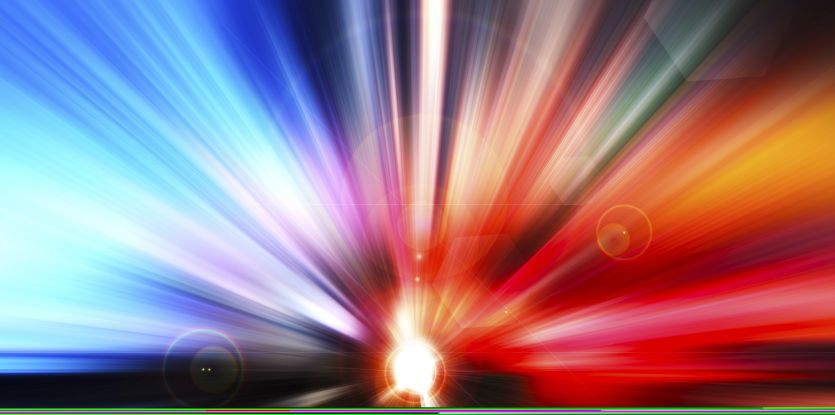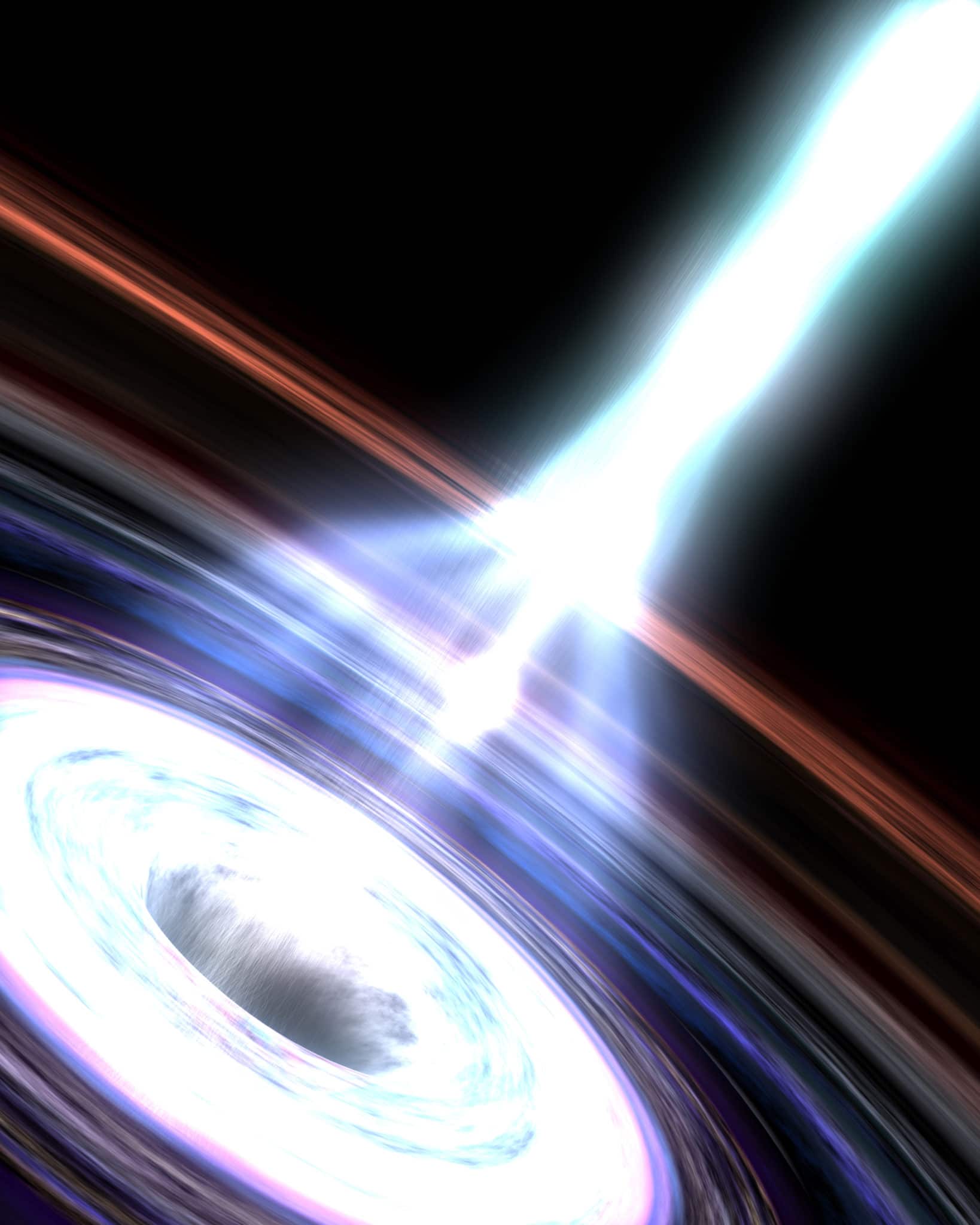Chanukah Lite – It Takes Two to Tango
By Simon Jacobson
Editor’s Note: Click here for Part 1 of this article. This article was written during Chanukah 2002
Each day of Chanukah we progress in the amount of lights we generate. With each growing light, we have the opportunity to take a deeper look into the properties of light and its message to us.
The wave/particle nature of light – like everything in existence – has a body and a soul. The body is the physical dimension, which manifests as material properties that we humans can observe, study, measure and quantify. This is called the scientific method. The soul of the object is comprised of the spiritual properties that define and shape the essence of the object. In other words, every detail of an entity’s physical personality has a mystical – inner – counterpart. As the spiritual energy ‘evolves’ and takes on physical shape, its ethereal nature ‘translates’ into physical dimensions that reflect their spiritual insides.
Indeed, uncovering the root source of existing phenomena, can help us understand better and fuller their nature and properties, and also teach us how we can tap into these forces in a complete way.
So, what is the root source of the dual wave/particle property of light?
Kabbalah and Chassidus explain that the balance of life is dependent on the delicate dance between energy and container, light and vessel (‘ohr’ and ‘keli’ in the original Hebrew) – ‘wave’ and ‘particle.’ Light is essentially like a ‘wave’ – a large field of energy, connected to the source and emanating outward. The container is like a ‘particle’ – a discrete and defined entity, that grounds and compartmentalizes the energy. This cosmic dance requires an acclimation of these two antithetical forces – matter and spirit, form and function – which initially defy each other, but then learn to adapt, interact and finally fully unite into one cohesive unit. This acclimation requires many stages, which actually define the gradations and progression of the cosmic order (‘seder hishtalshilut’), as the light and the containers learn to fuse together.
However, one major dilemma remains. Ultimately, light and container are two opposite forces. How then can they ever be expected to join as one, with the container absorbing the light and the light manifesting in the container? This quandary is not merely an esoteric one; it affects every major decision and conflict in our lives: How can we ultimately integrate our material and spiritual lives, our need to survive and our need for transcendence? Is it possible to truly merge matter and spirit, the outer and the inner – our inner selves and our outer activities, who we are and what we do?
To resolve this paradox, the mystics teach us that in essence both light and container come from one and the same source – G-d – which is neither light nor container. Resultantly, both light and container are not mutually exclusive forces; they actually include properties of the other: Light has a dimension of ‘container’ (particle) within it, and the container has an element of ‘light’ (wave) within itself.
And here we will see the fascinating roots of the ‘wave’ and ‘particle’ properties in light.
Chassidus explains that light has two dimensions, which are first only subtly distinguishable, but later manifest in more defined properties. Beginning from its ‘earliest’ root stage (not in time, but conceptually), there is the light (energy) that flows ‘inward’ and the light that flows ‘outward.’ Projective energy and withholding energy.
On the next level, there is the ‘infinite light’ and the ‘finite light.’ These two dimensions will become the root on a lower level of the cosmic order of ‘ohr ha’sovev,’ the light that transcends the worlds (‘sovev kol almin’), and ‘ohr ha’memaleh,’ the light that fills the worlds (‘memaleh kol almin’).
The ‘finite light’ (according to some opinions) is the root of the ‘ten sefirot’ (the ten emanations of Divine attributes which will ‘become,’ once existence comes into being, the building blocks of existence). At this ‘root’ level these sefirot do not yet have defined shape and form (relatively speaking), and they are called the ‘ten hidden sefirot.’
All this is on the level of light as it is in its source, before it actually manifests itself in existence. On the next level, following the ‘great tzimtzum’ (concealment/contraction of the all encompassing light) which leaves ‘space’ for existence (and the containers/particles) to become, comes what is called the ‘kav,’ a thin ray of light which shines into the vacuum created by the tzimtzum. The ‘kav’ (lit. line) is light, but the light is not extending in all directions, but is in the shape of a narrow line, and like a line, the ‘kav’ is made up of points (‘particles’). The light of the ‘kav’ in other words combines both ‘wave-like’ (infinite) properties and ‘particle-like’ (finite) properties.
This dual nature of the ‘kav’ would allow the light to manifest and ultimately join with the container.
The Etz Chaim adds that “from the thickness [i.e. the particles] in the light the containers are conceived.”[1]
Finally, when the lights enter the containers and produce the actual ‘sefirot’ the dual nature becomes fully manifest [one of the roots of the word ‘sefirah’ itself is to shine: ‘sefirah’ from the word sapir, the luminous sapphire stone]: On one hand, the light of the sefirot cause them to be ethereal and wave-like. On the other, the containers give the ‘sefirot’ particle-like distinct shape and form.
In Kabbalah there are actually three general opinions as to the nature of the light, to what degree the light itself contains ‘particle-like’ qualities, and how much of the particle-like shape and form stems from the interaction of the light with the container.
Rabbi Menachem Rakanti is of the opinion that the light has no ‘particles’ shaping; the shape comes exclusively from the containers. The Maarechet (and the Avodat HaKodesh and the Radbaz) holds that the light has defined particles. The Ramak and the Arizal reconcile between the two and explain that the light on its own has no particles, it assumes them through its manifestation in the containers. However, the Arizal goes further and explains that light on its own also has ‘particles,’ yet in the light they are ‘wave-like’ and therefore, concealed and unrecognizable.
Though this may be quite esoteric and abstract for some of the readers (for which I apologize) I felt compelled to write this because I believe that understanding the soul of light (its spiritual dimension) can help us immensely in understanding the body of light, including its dual wave/particle properties. The different opinions, for example, on the extent of the ‘particle-like’ qualities in light and their reasoning, can help us learn more about the particle/wave-like properties of light, and the balance between them.
I hereby submit, that by tracing light’s most esoteric roots, by discerning the different levels of light and the various opinions on the nature of light, we will be able to both better comprehend our present knowledge of light, as well as open up hitherto unrevealed mysteries as to the nature of light in our universe.
As much – or as little – as we know about light, there is so much more to uncover. Indeed, I would be bold enough to predict that we will soon discover that light is an entity whose surface we have barely scratched. We have discovered that light has dual properties of wave and particle, but that is just the tip of the iceberg. The mystical teachings on light can shed new light (no pun intended) on the nature of light and help us appreciate the very stuff that makes up our existence.
I hope that this encourages and motivates scientists and laymen to further explore these teachings on light. If you are interested in learning more about these ideas, I will be happy to help direct you.
What does all this light-talk mean in practical terms?
Allow me to say this. Whether you do or don’t understand the nature of light, whether you are or are not interested in the topic, these two dimensions of light define the shape of your life. The balance between wave and particle actually can help you improve your life and your relationships.
Here’s how: You see, each of our struggles comes down to a battle between two forces, what we will call the ‘wave’ and the ‘particle’ elements of your life. Ask yourself the following questions:
1. Am I too consumed with the details of my life and have I lost focus? Does the small picture distract me, forgetting the big one?
2. Or is it the other way around: Am I lost in the big picture, seduced by my idealism, fantasy and dreams, and lacking implementation? Simply not getting the job done, as my whimsical imagination floats in space?
3. Does my intimacy or spirituality affect and permeate the rest of my day, my work, my mundane activities? Or conversely: Does my spirituality not allow me to enter the daily grind? Am I escaping into the world of spirit or burying myself in the world of matter?
4. Do I compartmentalize? And if yes, am I aware of its affects in my life?
Each of the mystical opinions on the amount of shape and ‘particles’ within light address another aspect of the balance between the diversity and unity of our existence. The ultimate goal is to integrate both elements: the distinct and discrete shape of the details of our lives and the unifying wave.
Wavy particles, particley waves. Perhaps these are the true 0’s and 1’s that make up existence. If we were able to master the wave/particle dance of light, our lives would become that much brighter.
Ahh, flames of Chanukah: I will try not to forget your warm and illuminating message…
[1] Shaar Ha’Akudim chapter 3. Shaar Seder Abiy’a chapter 1. Explained in the discourse Otah Ohr 5672. End of the discourse BaSukkot Teishvu 5710.








Todah rabbah. You have taken a very difficult topic (light in our tradition) and explained it clearly in a way that summarizes many teachings studied before. I am grateful.
why are you afraid to print God
Brilliantly explained. Thank you very much!